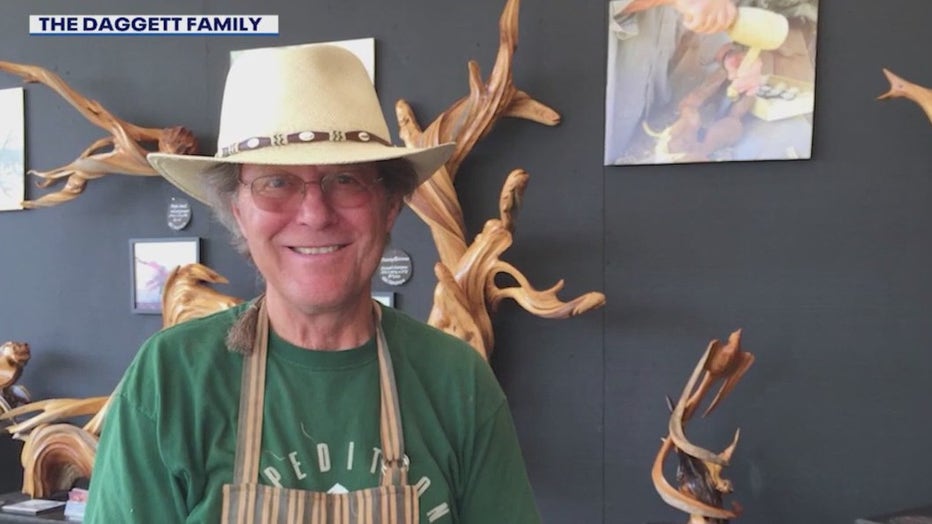Brain surgery helps ease Arizona man's Parkinson's tremors
Deep brain stimulation eases Arizona man's Parkinson's
Thanks to deep brain stimulation that alleviated his Parkinson's tremors, a Paradise Valley man has regained his ability to sculpt. FOX 10's Steve Nielsen has this story.
PHOENIX - A Paradise Valley man has regained his ability to sculpt thanks to brain surgery.
Bill Daggett, 79, has electrodes in his brain constantly working to stop his body from shaking due to Parkinson's disease.
Now, he’s using his talents to ensure everyone has access to this surgery.

Bill Daggett
What they're saying:
Sculpting is Daggett's passion.
"I’ve always loved it. I’ve loved it ever since I was a little boy," Daggett said.
A hammer and chisel is where he feels at home.
Daggett will spend years finding the right piece of wood to carve and sculpt.
"You look at a piece of wood, and it screams ‘I’m a bird, carve me into a bird,’ and then I carve it into a bird," he said.
Daggett started presenting at art shows as he noticed the tremors in his hands starting to grow worse.
A customer noticed at one of the shows seven years ago.
"He said, ‘Have you been diagnosed yet?’ Got me off to the side and talked to me in private," Daggett said.
That customer was a doctor at Barrow Neurological Institute. A week later, Daggett was diagnosed with Parkinson’s.
Two years ago, he stopped sculpting because of the tremors.
"It’s heartbreaking," he said.
What is Parkinson's?:
Mayo Clinic describes Parkinson's as, "Parkinson's disease is a movement disorder of the nervous system that worsens over time. The nervous system is a network of nerve cells that controls many parts of the body, including movement.
Symptoms start slowly. The first symptom may be a barely noticeable tremor in just one hand or sometimes a foot or the jaw. Tremor is common in Parkinson's disease. But the disorder also may cause stiffness, slowing of movement and trouble with balance that raises the risk of falls."
Dig deeper:
His doctors at Barrow recommended brain surgery that would create deep brain stimulation.
"Small holes are drilled behind the forehead, and the small electrodes are placed into the circuits that are affected by Parkinson’s, and they’re connected to a pacemaker and neurostimulator that’s in the chest," explained Dr. Francisco Ponce, a neurosurgeon at Barrow Neurological Institute.
After just a night in the hospital, the electrical response was dialed in.
"She said, ‘Do you feel anything?’ And I said, ‘No.’ My hands aren’t shaking as much, and all of a sudden my left hand stopped and then all of a sudden I felt a calm come over my body," Daggett remembered.
He came home and picked up that hammer and chisel.
"My hands would work. I couldn’t believe my hands worked, and now I’m excited about life. The whole thing. Not just my hands. My body. The tension is out of my body," Daggett said.
‘It was amazing’
"All of a sudden, having that restoration of function and being free of the disability is a very exciting time for them," Dr. Francisco Ponce said.
Daggett says he wants to get the word out, starting a nonprofit now for Parkinson’s research.
"It was amazing. Just thank God. It was amazing," Daggett said.
What's next:
This tech isn’t necessarily new, but it’s advancing.
The team at Barrow said it’s now being considered for use in patients with Alzheimer’s and other diseases to see if it can be just as effective at changing lives.
Learn More:
Click here to learn more about deep brain stimulation from Mayo Clinic.

